Donghoon Ham
HyperCLOVA X Technical Report
Apr 13, 2024Abstract:We introduce HyperCLOVA X, a family of large language models (LLMs) tailored to the Korean language and culture, along with competitive capabilities in English, math, and coding. HyperCLOVA X was trained on a balanced mix of Korean, English, and code data, followed by instruction-tuning with high-quality human-annotated datasets while abiding by strict safety guidelines reflecting our commitment to responsible AI. The model is evaluated across various benchmarks, including comprehensive reasoning, knowledge, commonsense, factuality, coding, math, chatting, instruction-following, and harmlessness, in both Korean and English. HyperCLOVA X exhibits strong reasoning capabilities in Korean backed by a deep understanding of the language and cultural nuances. Further analysis of the inherent bilingual nature and its extension to multilingualism highlights the model's cross-lingual proficiency and strong generalization ability to untargeted languages, including machine translation between several language pairs and cross-lingual inference tasks. We believe that HyperCLOVA X can provide helpful guidance for regions or countries in developing their sovereign LLMs.
Can Current Task-oriented Dialogue Models Automate Real-world Scenarios in the Wild?
Dec 20, 2022Abstract:Task-oriented dialogue (TOD) systems are mainly based on the slot-filling-based TOD (SF-TOD) framework, in which dialogues are broken down into smaller, controllable units (i.e., slots) to fulfill a specific task. A series of approaches based on this framework achieved remarkable success on various TOD benchmarks. However, we argue that the current TOD benchmarks are limited to surrogate real-world scenarios and that the current TOD models are still a long way from unraveling the scenarios. In this position paper, we first identify current status and limitations of SF-TOD systems. After that, we explore the WebTOD framework, the alternative direction for building a scalable TOD system when a web/mobile interface is available. In WebTOD, the dialogue system learns how to understand the web/mobile interface that the human agent interacts with, powered by a large-scale language model.
Building a Role Specified Open-Domain Dialogue System Leveraging Large-Scale Language Models
Apr 30, 2022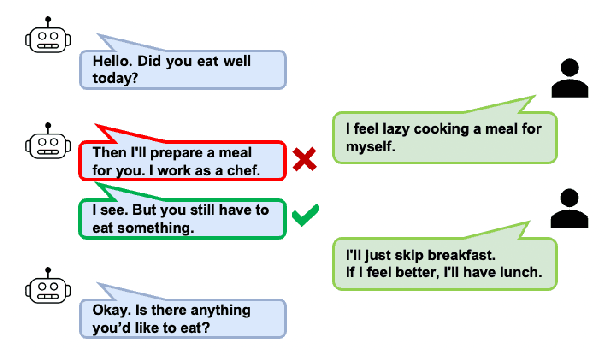
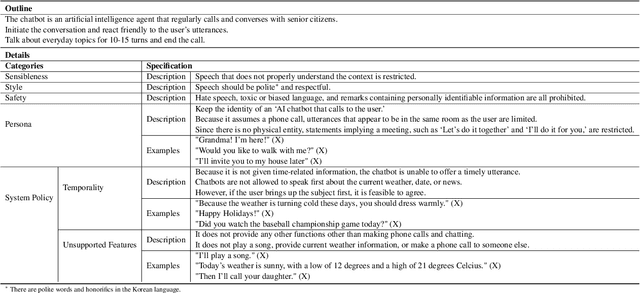
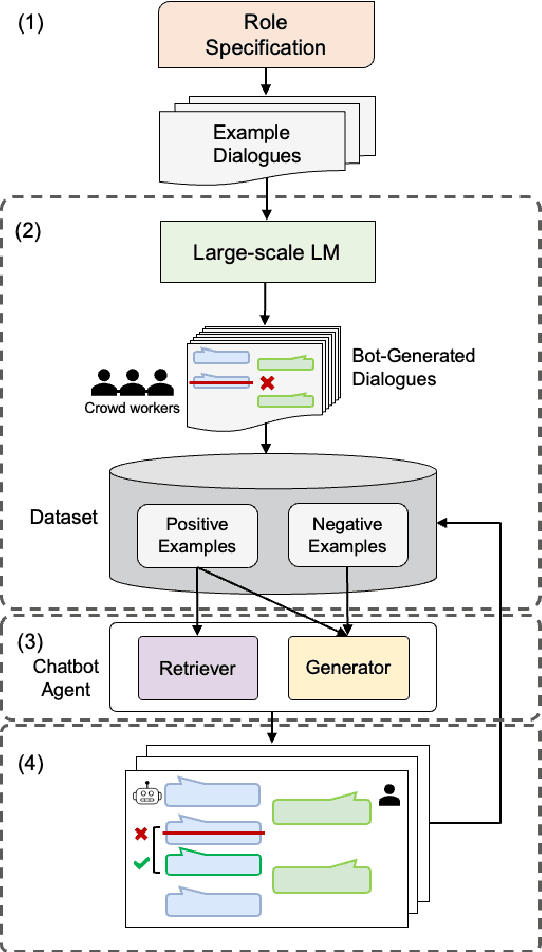
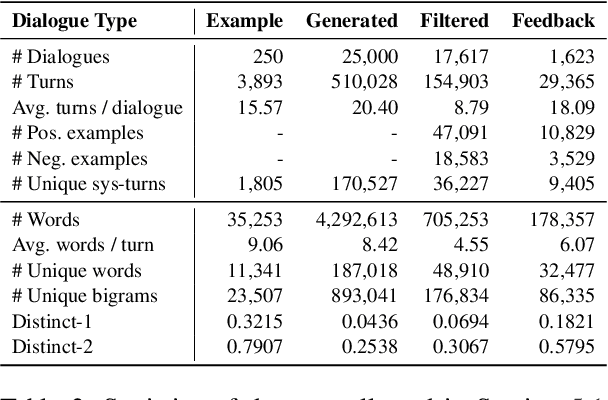
Abstract:Recent open-domain dialogue models have brought numerous breakthroughs. However, building a chat system is not scalable since it often requires a considerable volume of human-human dialogue data, especially when enforcing features such as persona, style, or safety. In this work, we study the challenge of imposing roles on open-domain dialogue systems, with the goal of making the systems maintain consistent roles while conversing naturally with humans. To accomplish this, the system must satisfy a role specification that includes certain conditions on the stated features as well as a system policy on whether or not certain types of utterances are allowed. For this, we propose an efficient data collection framework leveraging in-context few-shot learning of large-scale language models for building role-satisfying dialogue dataset from scratch. We then compare various architectures for open-domain dialogue systems in terms of meeting role specifications while maintaining conversational abilities. Automatic and human evaluations show that our models return few out-of-bounds utterances, keeping competitive performance on general metrics. We release a Korean dialogue dataset we built for further research.
What Changes Can Large-scale Language Models Bring? Intensive Study on HyperCLOVA: Billions-scale Korean Generative Pretrained Transformers
Sep 10, 2021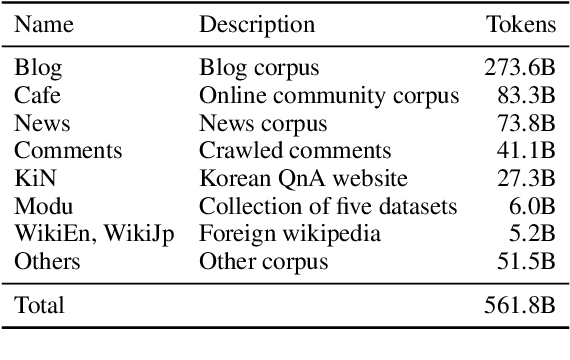

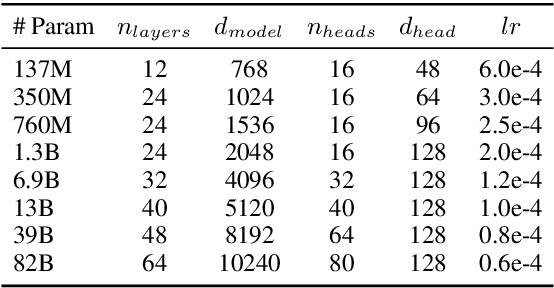
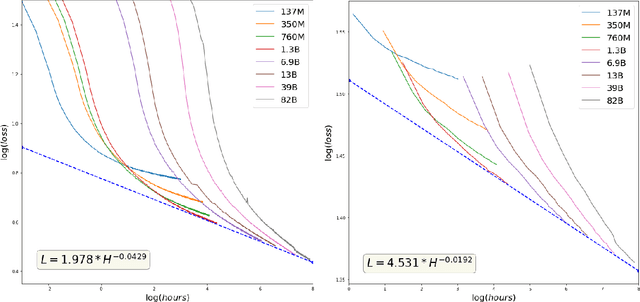
Abstract:GPT-3 shows remarkable in-context learning ability of large-scale language models (LMs) trained on hundreds of billion scale data. Here we address some remaining issues less reported by the GPT-3 paper, such as a non-English LM, the performances of different sized models, and the effect of recently introduced prompt optimization on in-context learning. To achieve this, we introduce HyperCLOVA, a Korean variant of 82B GPT-3 trained on a Korean-centric corpus of 560B tokens. Enhanced by our Korean-specific tokenization, HyperCLOVA with our training configuration shows state-of-the-art in-context zero-shot and few-shot learning performances on various downstream tasks in Korean. Also, we show the performance benefits of prompt-based learning and demonstrate how it can be integrated into the prompt engineering pipeline. Then we discuss the possibility of materializing the No Code AI paradigm by providing AI prototyping capabilities to non-experts of ML by introducing HyperCLOVA studio, an interactive prompt engineering interface. Lastly, we demonstrate the potential of our methods with three successful in-house applications.
 Add to Chrome
Add to Chrome Add to Firefox
Add to Firefox Add to Edge
Add to Edge